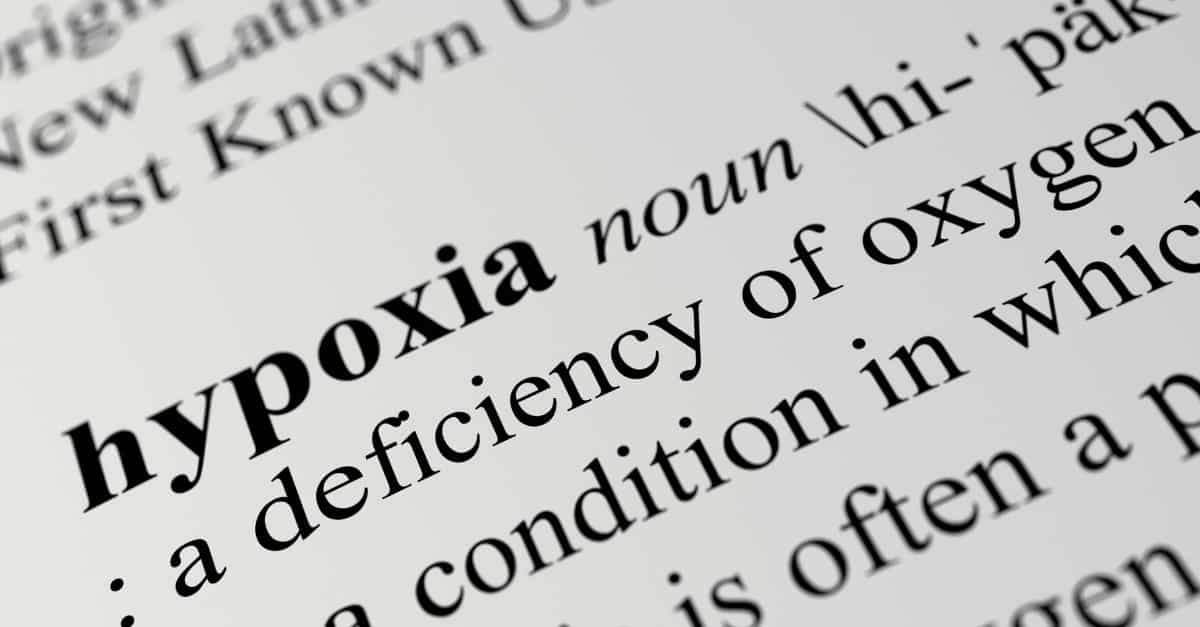One of the many challenges of living with a chronic lung disease is having low blood-oxygen levels.
Hypoxia can occur when the organs, cells, and tissues of the body do not receive enough oxygen.
Having a chronic lung disease can increase your risk of developing hypoxia. We’re here to help you better understand low blood oxygen and how it affects the body.
What are the dangers of low oxygen levels in your blood?
Hypoxia, sometimes referred to as hypoxemia, is a below-normal level of oxygen in the blood, often experienced by people with breathing or circulation problems.
A blood sample measuring the arterial blood gas may be performed to measure hypoxia, or it can be estimated by measuring oxygen saturation in the blood using a pulse oximeter.
What are the signs and symptoms of hypoxia or low blood oxygen levels?
- Wheezing
- Frequent cough
- Choking sensation
- Waking up out of breath
- Bluish discoloration of the skin
- Shortness of breath while resting
- Severe shortness of breath after physical activity
Low blood oxygen levels and lung disease
Chronic lung diseases, such as COPD, emphysema and chronic bronchitis, cause breathing difficulty and are characterized by the restriction of airflow. Restricted airflow increases the risk of developing hypoxia.
What are the complications of hypoxia or low blood oxygen?
Although hypoxia induced by chronic lung disease hinders breathing, it affects more than the lungs. If you find it difficult to inhale or to receive adequate amounts of oxygen, your blood becomes oxygen deprived—a serious situation.
All organs, tissues and cells in the body need oxygen, so taking action to ensure adequate oxygen intake is important.
What is oxygen therapy?
Many doctors prescribe supplemental oxygen or oxygen therapy for people with lung diseases who aren’t getting enough oxygen. The goal of oxygen therapy is to help you receive enough oxygen.
What is a normal blood oxygen level, and how can I improve my oxygen levels?
Normal blood oxygen levels are greater than 95 percent, and oxygen levels below 90 percent are considered low blood oxygen, suggesting hypoxemia.
There are many ways to help you improve your oxygen levels.
You could try adding plants such as the areca palm, snake plant, money plant or gerbera daisy to your home to naturally increase oxygen, or try natural air purifiers, such as salt lamps, peace lilies and bamboo charcoal.
Staying calm and practicing deep breathing exercises can lower stress levels and improve oxygen levels. When you’re relaxed, it’s easier to breathe, so consider giving meditation, yoga, writing in a journal, or positive thinking exercises a try.
Exercise is important for everyone, especially for people with lung diseases. Even gentle forms of exercise such as Tai Chi and walking can improve your oxygen levels and boost your exercise tolerance.
Drinking enough water is a simple way to increase your blood oxygen levels. Water hydrates the body, thereby helping to increase the volume of blood available for the lungs to oxygenate.
A healthy diet can also improve your oxygen levels. Using herbs instead of salt can reduce bloating and flavor your food. You can also try eating fresh, steamed vegetables such as spinach, potatoes, green beans and carrots.
Remember to eat plenty of lean protein, too.
Before trying a new diet, exercise or treatment plan, always discuss it with your doctor.

Christine Kingsley, APRN is the Health and Wellness Director at the Lung Institute where she focuses on providing helpful online resources for people looking for information on various lung diseases, breathing exercises, and healthy lifestyle choices. She advocates for holistic care that involves working with your doctor to explore all options including traditional and alternative care while focusing on diet and exercise as proactive measures.









